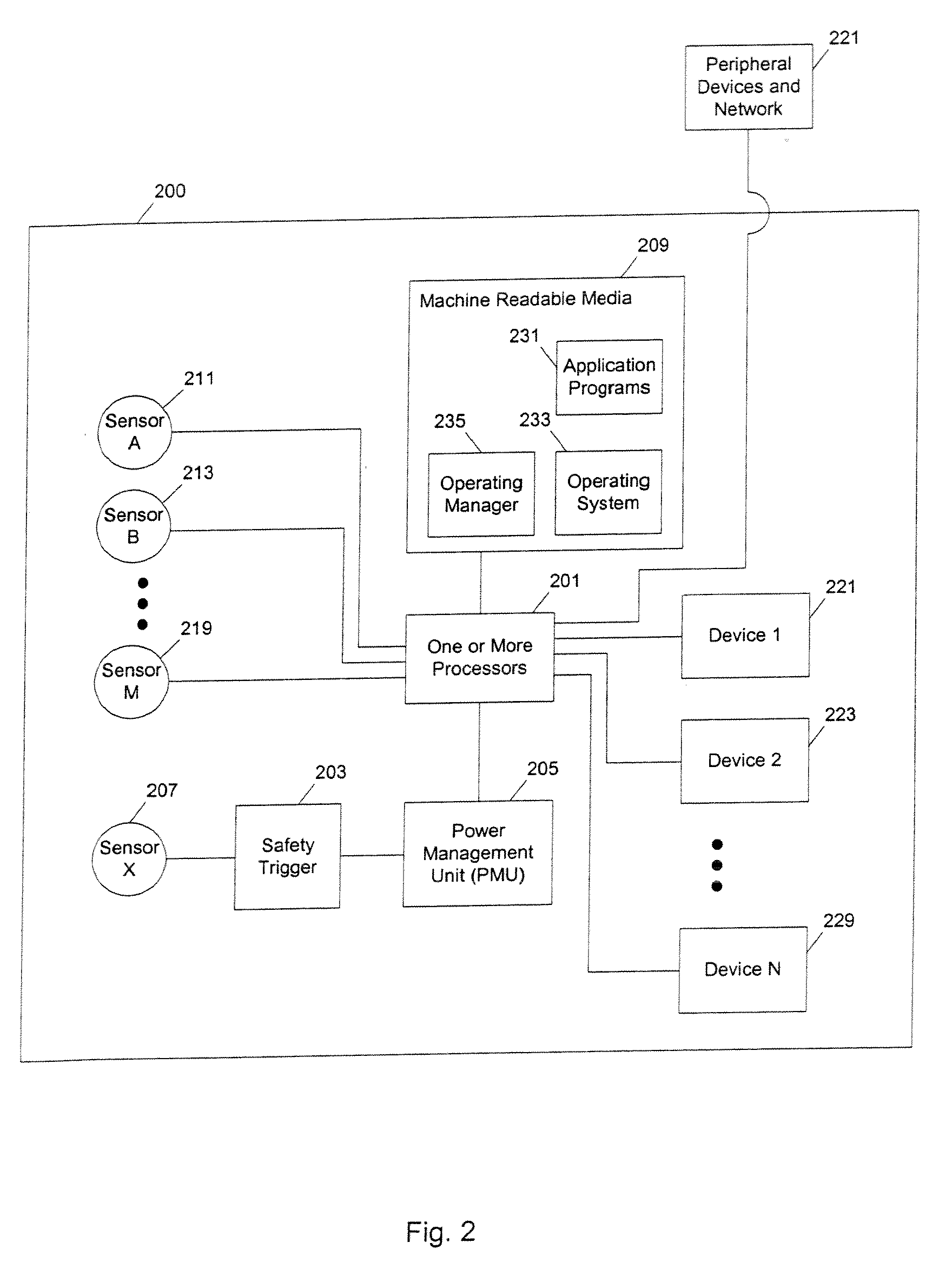Methods and apparatuses for operating a data processing system
a data processing system and data processing technology, applied in special data processing applications, digital computer details, starter details, etc., can solve the problems of fan consumption, microprocessor consumption, slowing down the processor, etc., and achieve the effect of reducing noise and power consumption, and reducing the speed of the fan
- Summary
- Abstract
- Description
- Claims
- Application Information
AI Technical Summary
Benefits of technology
Problems solved by technology
Method used
Image
Examples
Embodiment Construction
[0034]The following description and drawings are illustrative of the invention and are not to be construed as limiting the invention. Numerous specific details are described to provide a thorough understanding of the present invention. However, in certain instances, well known or conventional details are not described in order to avoid obscuring the description of the present invention. References to one or an embodiment in the present disclosure are not necessarily references to the same embodiment; and, such references mean at least one.
[0035]As the performance of data processing systems continues to increase, so do power and cooling requirements. A fan and heat sink may not be adequate for such high performance data processing systems. To meet the challenge of combined conflicting design goals (e.g., computation performance, power usage, cooling, acoustic noise, and others), at least one embodiment of the present invention seeks to manage the working states of various components ...
PUM
 Login to View More
Login to View More Abstract
Description
Claims
Application Information
 Login to View More
Login to View More - R&D
- Intellectual Property
- Life Sciences
- Materials
- Tech Scout
- Unparalleled Data Quality
- Higher Quality Content
- 60% Fewer Hallucinations
Browse by: Latest US Patents, China's latest patents, Technical Efficacy Thesaurus, Application Domain, Technology Topic, Popular Technical Reports.
© 2025 PatSnap. All rights reserved.Legal|Privacy policy|Modern Slavery Act Transparency Statement|Sitemap|About US| Contact US: help@patsnap.com



